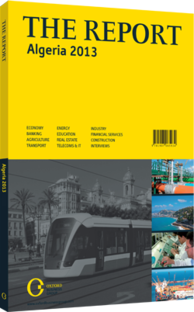A helping hand: Many staple products receive either direct or indirect government subsidies
As they are throughout North Africa – and indeed, much of the emerging world – subsidies remain a major driver of fiscal expansion in Algeria and have become a balancing act between minimising hardship for lower-income groups and avoiding a large rise in fiscal deficits. Algeria is luckier than most countries, with significant hydrocarbons revenues that give it greater flexibility, allowing it to expand coverage even as other countries look to roll back their subsidy programmes.
EXPLICIT SUPPORT: The state’s subsidy scheme was broadened significantly, following protests in January 2011 over rising prices, to cover cooking soya oil, sugar, semolina and some dried vegetables, in addition to the traditionally supported milk and flour. These measures were implemented alongside other efforts aimed at taming basic food inflation, such as suspending value-added tax and Customs duties on basic foodstuffs. Food prices are fixed well below world prices, at AD125 (€1.15) per litre of cooking oil, AD25 (€0.23) per litre of milk, AD20 (€0.18) per kg of flour, and AD90 (€0.83) and AD95 (€0.87) for bulk and packaged white sugar, respectively. This allows the government to cap the price of bread, a key staple, at AD8.5 (€0.08) a loaf, about a third of its AD25 (€0.23) production cost. Alongside these explicit subsidies, which are accounted for through the normal state budgeting process, Algeria has also extended significant implicit subsidies that are not officially recorded through in budget, but rather paid for through state-owned power and water utility firms and the national oil and gas company, Sonatrach.
IMPLICIT SUBSIDIES: Depending on consumption, electricity prices for households are set at between AD2 (€0.018) and AD3.2 (€0.029) per KWh and between AD1.48 (€0.014) and AD2.15 (€0.02) per KWh for industries. This is less than half the price of electricity in neighbouring Tunisia and Morocco, according to data from the UN Development Programme (UNDP). Fuel prices are set at €0.22/litre for petrol and €0.13/litre for diesel, compared to the EU averages of €1.5/litre and €1.3/litre respectively, according to the Ministry of Energy and Mines (MEM). The MEM estimates that the real equilibrium price for domestic fuel sales would be between AD60 (€0.55) and AD80 (€0.74). These prices are even lower than those in other oil-exporting countries such as Iraq, the UAE and Kazakhstan. Gas prices for domestic industries are capped at $0.21 per thousand British thermal units (mbtu), which is equivalent to AD612 (€5.63) per thousand cu metres. This is just under 10% of the average world price of $2.2/mbtu, according to the MEM. Finally, depending on consumption, water prices are capped at between AD3.6 (€0.033) and AD24.7 (€0.23) per cu metre for households, and between AD16.2 (€0.15) and AD24.7 (€0.23) per cu metre for industries, far lower than the AD69 (€0.63) per cu metre break-even production price reported by the Ministry of Water Resources.
RISING BURDEN: The cost of both categories of subsidies has been rising consistently and now accounts for a large share of budgeted recurrent expenditure. Household transfers have risen sharply from AD254bn (€883.2m) in 1999 to around AD1.85trn (€17bn) in 2012. The Ministry of Agriculture and Rural Development estimates that the combined cost of all basic foodstuffs subsidies will reach 1.1% of GDP in 2013. While these household transfers accounted for close to a quarter of the budget in 2012, ex-Minister of Finance Abdelkrim Harchaoui told local media that implicit subsidies on electricity, fuel, gas and water represented another AD2.93trn (€26.97bn) of government spending in 2012, bringing the total burden of subsidies considerably higher.
REFORM: Although authorities have made clear to multilateral institutions such as the IMF that subsidies will not be cut in the coming years, the government is making headway in quantifying the value of implicit subsidies. The 2014 budget proposal includes, for the first time, a tally of the cost of all subsidies, explicit and implicit, in its annex. This should help the government improve fiscal management by providing a more transparent appraisal of the total economic cost of subsidies.
You have reached the limit of premium articles you can view for free.
Choose from the options below to purchase print or digital editions of our Reports. You can also purchase a website subscription giving you unlimited access to all of our Reports online for 12 months.
If you have already purchased this Report or have a website subscription, please login to continue.

